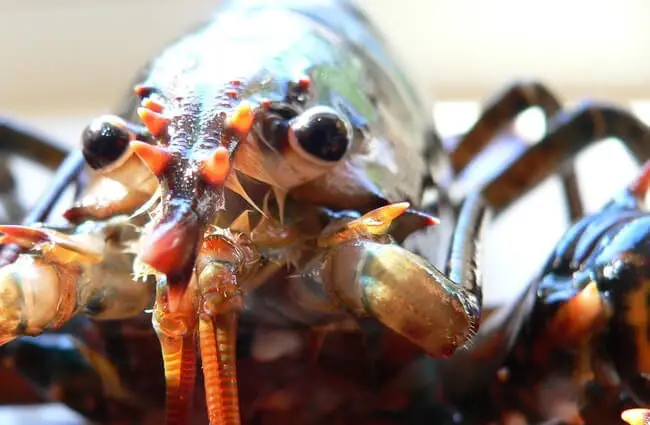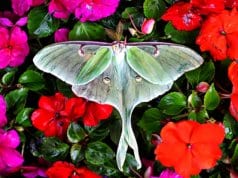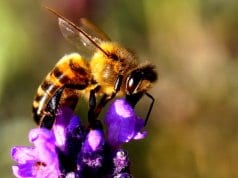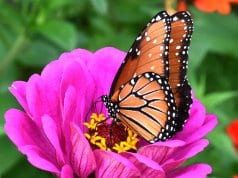Beneath the ocean’s surface, in the cool, often mysterious depths, resides a creature of remarkable resilience and ancient lineage: the lobster. Far more than just a culinary delicacy, these fascinating crustaceans are complex organisms with intricate lives, playing vital roles in marine ecosystems and captivating the curiosity of scientists and enthusiasts alike. Prepare to dive deep into the world of the lobster, exploring its biology, behavior, and enduring connection with humanity.

The Anatomy of an Ocean Dweller: What Exactly is a Lobster?
At its core, a lobster is a marine invertebrate belonging to the order Decapoda, a group that also includes crabs and shrimp. Its body is encased in a hard, protective exoskeleton, which serves as both armor and a skeleton. This shell is not static; lobsters must periodically shed it in a process called molting to grow, leaving them temporarily vulnerable until a new, larger shell hardens.
Key physical characteristics include:
- Claws: Lobsters possess two distinct claws. One is typically a large, crushing claw, used for breaking open shells of prey. The other is a smaller, serrated cutting claw, ideal for tearing flesh. The handedness (which claw is which) can vary among individuals.
- Antennae: Long, sensitive antennae help lobsters navigate their environment, detect food, and sense predators through touch and chemoreception (smell and taste).
- Eyes: Compound eyes provide a wide field of vision, though their eyesight is generally considered poor, relying more on chemical senses.
- Tail: A powerful, muscular tail allows for rapid backward escape movements, a crucial defense mechanism.
- Legs: Ten legs in total, including the two large claws. The remaining eight are walking legs, used for movement along the seabed.

Where the Wild Lobsters Roam: Habitat and Distribution
Lobsters are primarily bottom dwellers, preferring the cool, often cold, waters of temperate and tropical oceans. Their preferred habitats are diverse, offering both shelter and ample food sources.
Preferred Environments:
- Rocky Bottoms: These provide crevices and caves for shelter from predators and strong currents.
- Coral Reefs: In warmer waters, some species find refuge and food within the complex structures of coral reefs.
- Sandy or Muddy Substrates: Certain species are adept at burrowing into soft sediments, creating their own protective homes.
- Depth Range: Lobsters can be found from shallow intertidal zones to depths exceeding 2,000 feet (600 meters), depending on the species.
Geographically, lobsters are found worldwide. The American or Maine lobster (Homarus americanus) is iconic to the North Atlantic, ranging from Labrador to North Carolina. European lobsters (Homarus gammarus) inhabit the eastern Atlantic. Spiny lobsters (Palinuridae family), which lack the large claws of their American and European cousins, are widespread in warmer waters globally.

The Ocean’s Scavengers: What’s on a Lobster’s Menu?
Lobsters are opportunistic omnivores and crucial scavengers in their ecosystems. Their diet is varied, reflecting their adaptability and the availability of food in their benthic environments.
A Diverse Diet:
- Mollusks: Clams, mussels, and oysters are favorite targets, easily crushed by their powerful claws.
- Small Fish: Slow-moving or injured fish can become a meal.
- Other Crustaceans: Smaller crabs, shrimp, and even other lobsters (especially during molting) are consumed.
- Marine Worms: A common food source found in the seabed.
- Algae and Plant Matter: While primarily carnivorous, lobsters will also consume plant material.
- Detritus: Decaying organic matter on the seafloor forms a significant part of their diet, making them vital clean-up crew members.
Lobsters hunt primarily at night, using their keen sense of smell and touch to locate food. Their role as scavengers helps to recycle nutrients and maintain the cleanliness of the seabed.

A Journey Through Time: Lobster Evolution History
The lineage of lobsters stretches back hundreds of millions of years, making them truly ancient mariners. Their evolutionary history is a testament to their successful body plan and adaptability.
Key Evolutionary Milestones:
- Ancient Origins: The earliest lobster-like fossils date back to the Triassic period, over 200 million years ago. These early forms already possessed many of the characteristic features seen in modern lobsters.
- Crustacean Ancestry: Lobsters belong to the subphylum Crustacea, a vast and diverse group of arthropods that have been evolving for over 500 million years.
- Decapod Diversification: The order Decapoda, which includes lobsters, crabs, and shrimp, underwent significant diversification during the Mesozoic Era.
- Stable Form: While species have evolved and adapted to different niches, the fundamental body plan of a lobster has remained remarkably consistent over geological timescales, indicating its efficiency and success.
Studying lobster fossils provides valuable insights into ancient marine environments and the long-term evolutionary trends of marine life.

The Dance of Life: Mating and Reproduction
Lobster reproduction is a fascinating and complex process, often involving elaborate courtship rituals and significant parental investment.
The Reproductive Cycle:
- Courtship: A female lobster, often having recently molted and with a soft shell, will seek out a dominant male. She may spend days in his burrow, releasing pheromones to signal her readiness to mate.
- Mating: The male lobster, with his hard shell, protects the vulnerable female during this period. Mating occurs belly-to-belly, with the male transferring sperm packets (spermatophores) to a seminal receptacle on the female.
- Egg Laying: The female stores the sperm, sometimes for several months. When conditions are right, she extrudes thousands of tiny eggs, which are then fertilized by the stored sperm.
- “Berried” Females: The fertilized eggs are attached to the swimmerets on the underside of her tail, where she carries and protects them for up to a year. A female carrying eggs is known as “berried.”
- Larval Stage: Once hatched, the larvae are planktonic, drifting in the water column for several weeks to months. They undergo several molts, transforming through various larval stages before settling to the seabed as tiny juveniles. This planktonic stage is highly vulnerable to predation.
- Maturity: Lobsters typically reach sexual maturity after several years, depending on species and environmental conditions.

Ecosystem Engineers: Lobster’s Contribution and Interactions
Lobsters are not solitary figures in the ocean; they are integral components of their marine ecosystems, interacting with a wide array of other organisms.
Ecosystem Contributions:
- Scavengers and Decomposers: By consuming carrion and detritus, lobsters help clean the seabed and recycle nutrients, preventing the build-up of organic matter.
- Prey Species: Juvenile lobsters and molting adults are vulnerable to predation by larger fish (such as cod and haddock), sharks, seals, and even octopuses.
- Habitat Modifiers: Their burrowing activities can subtly alter the seabed, creating microhabitats for other small invertebrates.
- Food Web Link: They serve as a crucial link in the food web, transferring energy from smaller invertebrates and detritus to larger predators.
Lobsters and Humanity: Culture, Cuisine, and Conservation
The relationship between lobsters and humans is long and complex, spanning from ancient sustenance to modern luxury, and now, to critical conservation efforts.
Contribution to Human Culture:
- Culinary Icon: Once considered “poor man’s food” or even bait, lobster has transformed into a global delicacy, symbolizing luxury and fine dining. Its rich flavor and unique texture are prized worldwide.
- Economic Driver: The lobster fishing industry is a significant economic force in many coastal regions, particularly in North America and Europe, supporting thousands of jobs and local communities.
- Cultural Symbolism: In some coastal cultures, the lobster is a symbol of resilience, strength, and the bounty of the sea.
Interaction with Humans:
- Fishing Industry: Commercial and recreational fishing for lobsters is widespread. Methods include traps (pots) and diving. Sustainable fishing practices, including size limits, trap escape vents, and protecting “berried” females, are crucial for maintaining healthy populations.
- Aquaculture: While challenging, efforts are underway to farm lobsters, though it is not as widespread as shrimp or finfish aquaculture due to slow growth rates and complex life cycles.
- Conservation Challenges: Overfishing, habitat degradation, climate change (leading to ocean acidification and warming waters), and disease outbreaks pose significant threats to lobster populations.
Encountering Lobsters: Advice for Enthusiasts and Accidental Meetings
For those fascinated by these creatures, knowing how to observe them responsibly or what to do if you stumble upon one is essential.
For the Animal Lover: Finding Lobsters in the Wild
Finding a lobster in its natural habitat requires patience and often specialized equipment. Remember, observation is key, and minimizing disturbance is paramount.
- Where to Look:
- Tide Pools and Shallow Rocky Shores: At low tide, smaller lobsters or juveniles might be found hiding in crevices or under rocks.
- Deeper Waters (Snorkeling/Diving): For larger specimens, snorkeling or SCUBA diving in rocky areas, kelp forests, or around artificial reefs offers the best chance. Look for antennae protruding from cracks or under ledges.
- When to Look: Lobsters are primarily nocturnal, so night dives or twilight observations can be more fruitful.
- How to Observe:
- Maintain a respectful distance.
- Avoid sudden movements or bright lights that could startle them.
- Never attempt to catch or handle a wild lobster unless you are a trained professional or licensed fisher.
For the Hiker: Encountering a Stranded Lobster
It is rare, but occasionally a lobster might be found stranded on a beach or in an unusual location. This usually indicates distress.
- Do Not Touch: Lobsters can deliver a painful pinch. More importantly, handling a distressed animal can cause further harm.
- Observe from a Distance: Note its condition and location.
- Contact Local Authorities: If you believe the lobster is alive and stranded, contact local marine wildlife rescue organizations, fisheries departments, or animal control. They are equipped to assess the situation and provide appropriate assistance. Do not attempt to “rescue” it yourself, as you may cause more harm or violate local regulations.
Caring for Captive Lobsters: A Zookeeper’s Guide
Maintaining lobsters in captivity, whether in an aquarium or a research facility, requires careful attention to their specific environmental and biological needs.
Essential Tasks for Zookeepers:
- Water Quality Management: This is paramount.
- Maintain stable, cold water temperatures appropriate for the species (e.g., 40-50°F or 4-10°C for American lobsters).
- Ensure excellent filtration to remove waste and maintain low ammonia, nitrite, and nitrate levels.
- Monitor salinity (specific gravity) and pH regularly.
- Provide strong aeration to ensure high dissolved oxygen levels.
- Habitat Enrichment:
- Provide ample hiding spots, such as PVC pipes, ceramic caves, or rock formations, to reduce stress and mimic natural burrows.
- A suitable substrate (sand or gravel) allows for natural burrowing behaviors.
- Diet and Feeding:
- Offer a varied diet of fresh seafood (shrimp, mussels, small fish), commercial crustacean pellets, and occasional blanched vegetables.
- Feed sparingly to avoid overfeeding and water quality degradation. Remove uneaten food promptly.
- Monitoring Health:
- Observe for signs of disease, such as shell lesions, lethargy, loss of appetite, or unusual behavior.
- Monitor molting cycles. Provide a quiet, undisturbed environment for lobsters undergoing ecdysis (molting), as they are extremely vulnerable.
- Social Considerations: Lobsters are generally solitary and can be territorial.
- Avoid overcrowding.
- If housing multiple lobsters, ensure ample space and hiding spots to prevent aggression, especially during feeding or molting.
What to Avoid:
- Sudden Environmental Changes: Rapid shifts in temperature, salinity, or pH can be highly stressful and fatal.
- Overfeeding: Leads to poor water quality and potential health issues.
- Improper Handling: Always handle lobsters carefully, supporting their body and avoiding excessive pressure on their claws or tail. Use thick gloves.
- Incompatible Tank Mates: Do not house lobsters with aggressive fish or other crustaceans that might injure them, especially during molting.
- Using Tap Water Directly: Always treat tap water to remove chlorine and chloramines, and adjust salinity and temperature before adding it to a lobster tank.
A Huge List of Interesting Lobster Facts
- Immortal? Not Quite: Lobsters do not appear to age in the traditional sense, meaning their cells do not degrade with time. They can theoretically live indefinitely, growing larger with each molt, only succumbing to disease, injury, or predation.
- Blue Lobsters: A rare genetic mutation causes an overproduction of a certain protein, resulting in a striking blue coloration. The odds are estimated at 1 in 2 million.
- Yellow and Orange Lobsters: Even rarer are yellow (1 in 30 million) and orange (1 in 10 million) lobsters, also due to genetic variations.
- Albino Lobsters: The rarest of all, albino or “crystal” lobsters lack all pigment, appearing ghostly white. The odds are astronomical, around 1 in 100 million.
- Brain in Their Throat: A lobster’s brain is located in its throat, and its nervous system extends throughout its body.
- Teeth in Their Stomach: Lobsters have a gastric mill, essentially “teeth” inside their stomach, which grinds food before digestion.
- Pee Out of Their Faces: Lobsters release urine from glands located at the base of their second antennae, often doing so during social interactions.
- Can Regenerate Limbs: If a lobster loses a claw or leg, it can regenerate a new one over several molts.
- Long Lifespan: Large American lobsters are estimated to be over 50 years old, with some potentially living for over a century.
- Cannibalistic Tendencies: Lobsters can be cannibalistic, especially towards recently molted, soft-shelled individuals.
- Right or Left Handed: Like humans, lobsters can be “right-clawed” or “left-clawed,” meaning one crushing claw is dominant.
- They “Hear” with Their Legs: Lobsters have tiny hairs on their legs that can detect vibrations in the water, helping them sense their surroundings.
From their ancient origins to their complex interactions within marine ecosystems and their unique place in human culture, lobsters are truly remarkable creatures. Understanding their biology and behavior not only enriches our appreciation for the natural world but also underscores the importance of responsible stewardship of our oceans for generations to come.






![Red Angus Closeup of a beautiful Red Angus cowPhoto by: U.S. Department of Agriculture [pubic domain]https://creativecommons.org/licenses/by/2.0/](https://animals.net/wp-content/uploads/2020/03/Red-Angus-4-100x75.jpg)

